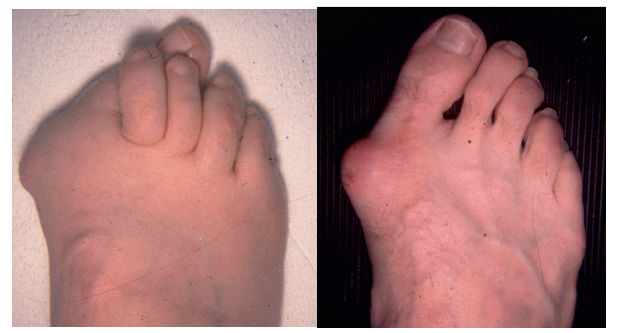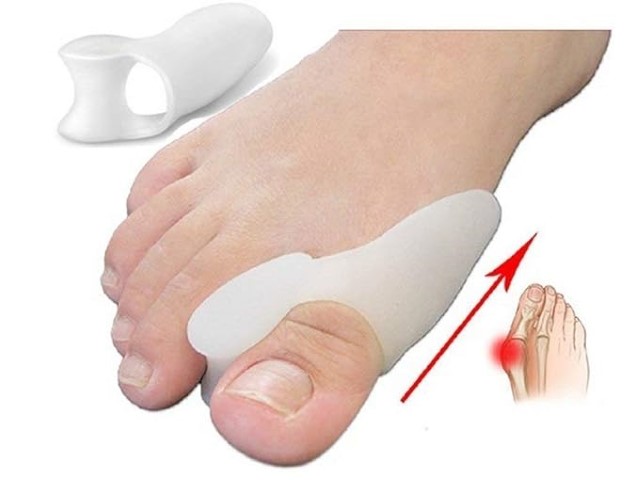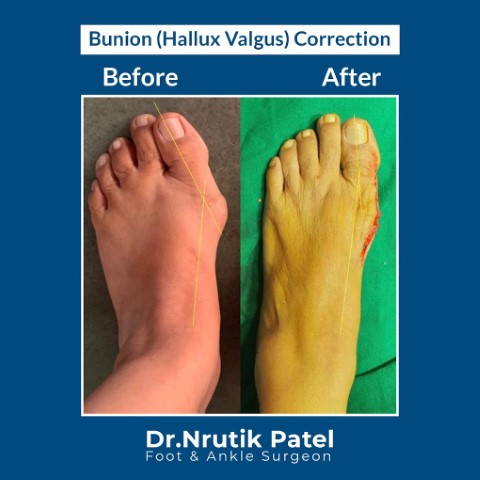A bunion is a bony bump that forms on the joint at the base of your big toe. It occurs when some of the bones in the front part of your foot move out of place. This causes the tip of your big toe to get pulled toward the smaller toes and forces the joint at the base of your big toe to stick out. The skin over the bunion might be red and sore.
Symptoms :-
A bulging bump on the outside of the base of your big toe
Swelling, redness or soreness around your big toe joint
Corns or calluses — these often develop where the first and second toes rub against each other
Limited movement of your big toe
Causes :-
There are many causes for bunion. Factors that influence to develop bunion
High heels :-
Wearing high heels forces your toes into the front of your shoes, often crowding your toes.
Ill-fitting shoes :-
People who wear shoes that are too tight, too narrow or too pointed are more likely to develop bunions.
Rheumatoid arthritis :-
Having this inflammatory condition can make you more likely to develop bunions.
Heredity :-
The tendency to develop bunions might be the result of an inherited problem with the structure or anatomy of your foot.
Complications :-
Possible complications of bunions include :
Bursitis :-
This painful condition occurs when the small fluid-filled pads that cushion the bones near your joints become inflamed.
Hammertoe :-
An abnormal bend that occurs in the middle joint of a toe, usually the toe next to your big toe, can cause pain and pressure.
Metatarsalgia :-
This condition causes pain and swelling in the ball of your foot.
Prevention :-
To help prevent bunions, choose shoes carefully. They should have a wide toe box — no pointy toes — and there should be space between the tip of your longest toe and the end of the shoe.
Your shoes should conform to the shape of your feet without squeezing or pressing any part of your foot.
Treatment :-
Treatment options vary depending on the severity of your bunion and how much pain it causes.
Conservative treatment :-
Nonsurgical treatments that may relieve the pain and pressure of a bunion include :
Changing shoes :-
Wear roomy, comfortable shoes that provide plenty of space for your toes.
Padding :-
Over-the-counter, nonmedicated bunion pads or cushions may be helpful. They can act as a buffer between your foot and your shoe and ease your pain.
Medications :-
Mild painkiller may help you to reduce your pain
Shoe inserts :-
Padded shoe inserts can help distribute pressure evenly when you move your feet, reducing your symptoms and preventing your bunion from getting worse. Over-the-counter supports can provide relief for some people.
Applying ice :-
Icing your bunion after you’ve been on your feet too long or if it becomes inflamed can help relieve soreness and swelling. If you have reduced feeling or circulation problems with your feet, check with your doctor first before applying ice.
SURGERY :-
If conservative treatment doesn’t relieve your symptoms, you might need surgery. Surgery is not recommended for cosmetic reasons; only when a bunion causes you frequent pain or interferes with your daily activities.
There are many surgical procedures for bunions
Surgical procedures for bunions can be done as single procedures or in combination. They might involve :
Removing the swollen tissue from around your big toe joint
Straightening your big toe by removing part of the bone
Realigning one or more bones in the forefoot to a more normal position to correct the abnormal angle in your big toe joint
Joining the bones of your affected joint permanently








